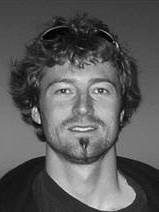MA Project at NTNU, Trondheim
CSCW Supervisor: Jan Ketil Rød
This master thesis will study internal armed conflicts in Africa after 1970. Armed conflicts are not randomly distributed events. Their location is determined by factors that have a geographic variation, and consequently, studies that aim to explain and/or predict where armed conflicts are likely to occur will benefit from a geographic approach.
Research has identified geographical factors that may influence the onset or duration of armed conflicts. The aim of this study is to identify the relative importance of the many factors that usually are associated with the risk of armed conflicts. Since internal conflicts are sub-national events, it is crucial to use sub-national data. I will conduct a disaggregated analysis using Geographical Information Systems. Similar disaggregated studies have been conducted by Buhaug and Rød (2005), but I will take this a step further by conducting my analyses strictly using GIS, and thus circumvent some of the problems concerning spatial autocorrelation.
In short, I will construct a model which takes the geographical factors recognized or hypothesized to be influential as input, and test it against incidents of conflict. This procedure will generate weights, or importance, for each of the geographical factors. The weights can be used to create a map showing areas prone to territorial conflict. This could be a part of an early warning system.
The following data are going to be used in this study:
PRIO/Uppsala Conflict dataset from 1970 to 2004, Diamonds, Oil and Gas, Gemstones, Forest, Mountains, Distance to International Borders, Distance to Capital, Major Roads, Ethnicity (using language groups as a proxy) and Population Density. Other data might also be included. The model will be flexible and is therefore susceptible to additional or updated datasets as they become available.
The model will be created with a tool called Model Builder, which is a part of ArcGIS 9.
I will use scripts, written in a programming language called Python, to customize my model. Python is delivered as part of the ArcGIS package and integrates easily with Model Builder.
The creation of this model is known as cartographic modelling, and I will follow a procedure by Malczewski (2000) using Weighted Linear Combination. This is a guideline of how to put different geographic information together to find spatial suitability or probability of a phenomenon. In this case this will be used to identify areas prone to armed conflicts.
If time permits, I would like to include another method to find significant factors and create a map that identifies areas prone to conflict. This will be in addition to the model discussed above. When the two results are compared it will give an indication of how well the model works. Should the two methods result in correlating maps, it would give the model more credibility.
The other method I would like to use is based on Thomas Bayes’ theorem of probability. Richard Aspinall (2000) has built this probability formula into an extension for ArcView 3.x. In addition to the finished map, this method will provide various statistical measures on the different geographical factors, which also contributes to the interpretation of the results from the main model (Jankowski 2004).






